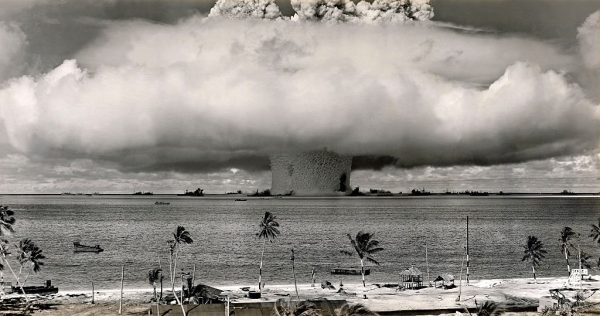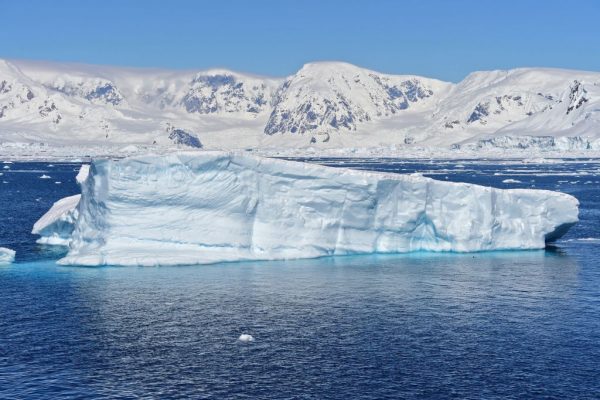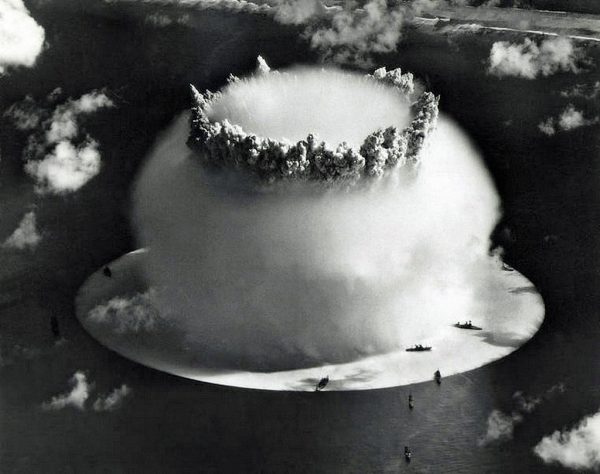Antarctic Ice Sheets Leaking Radioactive Chlorine From 1950s Nuclear Weapon Tests
Nuclear weapons are a symbol of the modern age, offering mute testimony to the destruction man has been capable of since the second half of the 20th century.
After their development in the late 1940s and 1950s, scientists naturally had to test them, and so they chose isolated and relatively uninhabited areas in which to do so.

The United States tested them in the Pacific Ocean, in the Marshall Islands. And now one of the nuclear isotopes released during those tests, known as chlorine – 36, is showing up in Arctic ice sheets. It is yet another reminder of the potentially deadly effects testing nuclear weapons can wreak.
But scientists have been quick to point out that the chlorine – 36 found in nuclear bombs also occurs in nature, and insist that its existence is not cause for alarm.
Scientists say that when the bombs were tested, the radioactive isotopes were sent out into ocean waters. They moved silently through those waters until they reached Antarctica, and froze within sheets of ice.
The experts say that all have dissipated since then, with the exception of chlorine – 36. But that substance also occurs naturally in the atmosphere and is in fact a helpful tool for scientists seeking to date ice cores.
According to Melanie Baroni, a geoscientist with the European Centre For Research and Teaching in Geoscience & the Environment, based in France, these observation of the Arctic ice sheets are not revealing any new information about potential harm to man.

She explained in an interview in October, “There is no more nuclear chlorine – 36 in the global atmosphere. That is… why we should observe natural chlorine – 36 everywhere.” In other words, the “good” isotopes are in the air, but the “bad” isotopes are locked in the ice, at least in theory.
When researchers examined two specific regions of Antarctica, one with lots of snow and one with little, they found high amounts of chlorine – 36 in the region with less snow.
They were quick to add, however, that the resulting radiation levels were too low to cause harm of any kind.

Yet its discovery proved that chlorine – 36 is much longer lasting than anyone suspected. It’s also capable of greater mobility than scientists previously believed; it has travelled closer to the surface than researchers thought it could.
They continue to monitor its levels, as they have since 1998.
Why is this information important? On its face it may seem arcane, even trivial to anyone not involved in geoscience research.
It’s important to understand because, like everything else man-made, tracking these substances is vital if we are to understand how our climate, and environment, have been impacted by the introduction of nuclear materials.
Nuclear testing was first begun in the Pacific in 1946, not long after the conclusion of the Second World War. The U.S. undertook testing in the Marshall Islands, in an area known as the “Pacific Proving Grounds,” because it was little more than a massive chain of small islands.
Today, there are lingering remnants of those tests, beneath a massive lid over what is called “The Dome.” Contained therein is a gargantuan pile of leftover radioactive waste.
Which include contaminated soil, still deadly from destruction caused by the American government exploding almost 70 nuclear bombs in the region between 1946 and 1958.
The government in the Marshall Islands is lobbying the Americans to help clean up the lethal mess they made, but to no avail. As recently as November 10th, in an interview with the L.A. Times, the president of the Republic of the Marshall Islands Hilda Heine, expressed exasperation and disappointment with the United States over its inaction.
“How can it (the Dome) be ours” she asked. “We don’t want it. We didn’t build it. The garbage inside is not ours. It’s theirs.” Her pleas, however valid they may be, are apparently falling on deaf ears in Washington.
But with the advent of turbulent and warming seas and other noticeable factors associated with global warming, the “Dome” is at risk of decay and leakage.
Another Article From Us: 18,000-Year-Old Frozen Puppy Found in Permafrost
And so while the ice sheets in Antarctica may be revealing little or no damage from the nuclear tests in the Pacific all those years ago, according to scientists, clearly those to the south are still reeling from the aftereffects.





